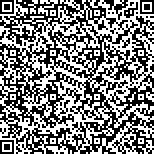下载中心
优秀审稿专家
优秀论文
相关链接
摘要

云层对地气系统辐射能量平衡有重要的调节作用,然而传统1维大气辐射传输模型仅能考虑晴空和全云两种情况。为了更好地研究云层对地表短波辐射的影响,以大气辐射传输模型SBDART(Santa Barbara Disort Atmospheric Radiative Transfer)为基础,在短波辐射传输基本方程中引入半球天空有效云覆盖度和区域真实云覆盖度两个关键云参数,考虑太阳方向和半球天空云层覆盖情况,对模型进行几何关系的修正。结合短波辐射的影响因素和SBDART模型的内置参数,选择13个参数,使用全局定量敏感性分析软件SimLab对修正后的模型进行参数敏感性分析及应用讨论。研究结果表明:该模型能够较好地描述云层对地表短波辐射的影响;对下行短波辐射和地表短波净辐射而言,太阳天顶角和地表反照率的影响最为显著;两个云覆盖参数在很大程度上也影响了地表短波辐射分量;在模型实际应用过程中,敏感性较强的6个参数均可以通过卫星遥感数据得到,模型具有较好的应用前景。由此可见,改进的短波辐射传输模型能够更好地考虑不同云层条件下、不同太阳-云-观测几何下的短波辐射传输问题,有利于提高短波辐射参量的遥感反演精度。
Clouds, being the most abundant and variable factor in the atmosphere, are critical to the modification of Earth-atmosphere energy balance. The effects of clouds on radiation should therefore be carefully and thoroughly considered. However, traditional atmospheric radiative transfer models only consider two extreme situations, namely, all clear and overcast. To understand the influence of clouds on surface shortwave radiation and improve the accuracy of shortwave radiative components derived from remote sensing dataset, we propose a novel radiative transfer model to analyze the cloud conditions in this work.
Based on the traditional one-dimensional radiative transfer model Santa Barbara DISORT Atmospheric Radiative Transfer (SBDART), this study first classifies the actual sun/cloud-viewing geometric conditions into nine subtypes, considering whether the directions of the sun and sensor are obscured by clouds. Then, the original formula of land surface downward radiative components is expanded. Two cloud fraction parameters (i.e., hemispherical effective cloud fraction and regional cloud fraction) are introduced to the formula to establish an improved shortwave radiative transfer model, namely, the SBDART-CF model. Based on the formula, the nine subtypes are summarized into two types, that is, the situations where the direction of the sun is either obscured by the cloud or not. Then, the atmospheric spherical albedo and atmospheric transmission of different cloud conditions are compared to narrow the range of cloud parameters. Other thirteen parameters, such as solar zenith angle, surface albedo, and cloud thickness, among others, are introduced to the following sensitive analysis. Finally, the effects of the above-mentioned model parameters on the surface shortwave radiative components under different circumstances are calculated and analyzed by using SimLab software, which employs a global quantitative sensitivity analysis method.
The proposed shortwave radiative transfer model can efficiently describe the influence of clouds on the surface shortwave radiation by considering the cloud horizontal distribution in the sky. Solar zenith angle and surface albedo both play significant roles in the modification of downward shortwave radiation and surface net shortwave radiation. Hemispherical effective cloud fraction and regional cloud fraction also considerably affect the radiation components. Six factors that are also important to the model can be easily derived from the satellite products and therefore can contribute to the model application effectively. Water vapor, ozone, and carbon dioxide column volume exert minimal effects on the surface shortwave radiation components under all the considered conditions.
The above analysis results show that the proposed SBDART-CF model can deal with shortwave radiative problems under different cloud conditions. Therefore, the model can effectively accomplish the radiative component estimation from remotely sensed datasets.

